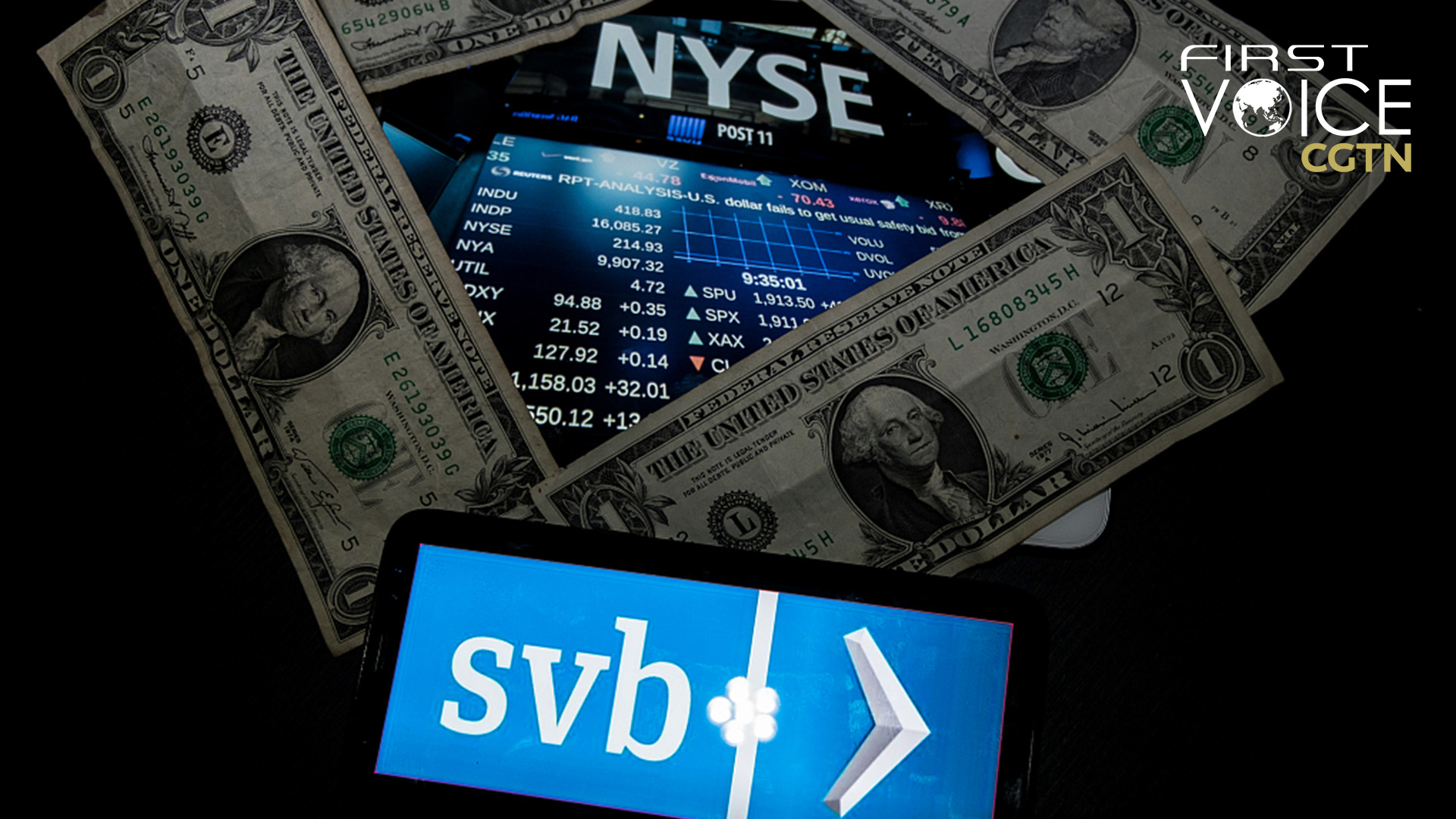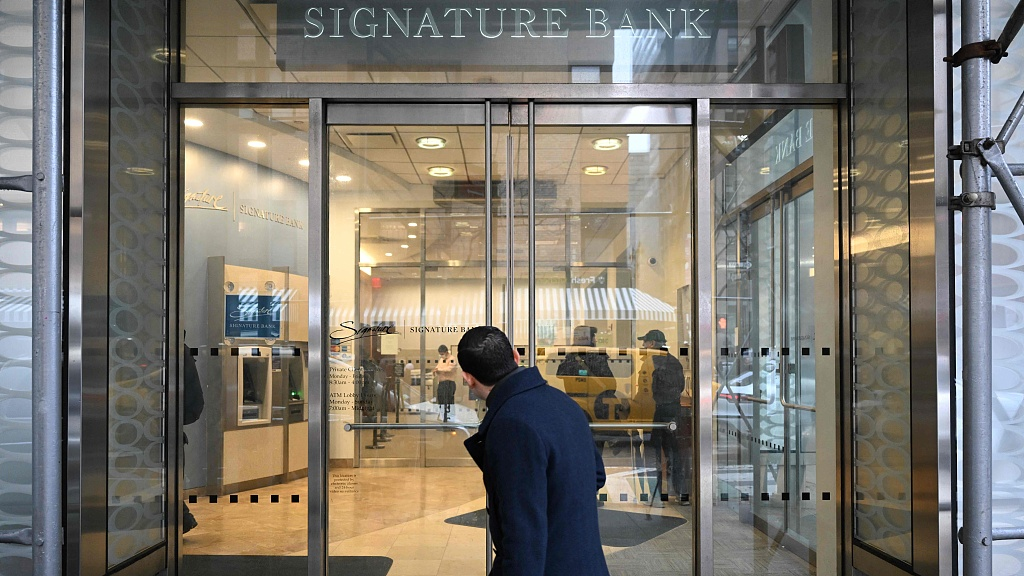
The U.S. banking and financial sector has a long history of lobbying against regulation, arguing that it puts unnecessary restraints on innovation and economic growth. /CFP
The U.S. banking and financial sector has a long history of lobbying against regulation, arguing that it puts unnecessary restraints on innovation and economic growth. /CFP
Editor's note: CGTN's First Voice provides instant commentary on breaking stories. The column clarifies emerging issues and better defines the news agenda, offering a Chinese perspective on the latest global events.
The spectacular collapse of Silicon Valley Bank (SVB) last week along with reports that American banks were sitting on hundreds of billions of dollars in unrealized losses have raised serious concerns about the stability of the U.S. banking system. While U.S. President Joe Biden has promptly assured Americans that their "banking system is safe," the facts tell a different story.
Regulators had to rush to close SVB on Friday when it experienced a traditional run on the bank where depositors rushed to withdraw their funds all at once. The sudden and rapid downfall of SVB – the country's 16th biggest bank by assets – has not only left investors and others in the banking and financial sectors shocked and shaken; it also heralded the failure of another lender, Signature Bank, which was seized by the regulators on Sunday.
At the time of their respective collapses, SVB's assets were valued at $209 billion and Signature Bank's at $118 billion, giving them the unenviable distinction of being the second- and third-largest failures in U.S. banking history. The only larger failure in the U.S. was the 2008 collapse of Washington Mutual with assets worth $307 billion at the time of failure.
The Treasury Department, Federal Reserve and Federal Deposit Insurance Corporation (FDIC) have assured that the clients of both banks will be protected and have access to their funds and announced steps designed to protect the customers and prevent more bank runs.
The latest bank collapses were triggered, in part, due to the plummeting value of bonds the lenders had acquired when the market was bullish, and when the bank had a more than a steady flow of customer deposits coming in and needed somewhere to park the cash. Back then, the interest rates were near zero and many U.S. banks rushed in to procure treasuries and bonds. In recent times, with Federal Reserve hiking interest rates to fight surging inflation, those bonds have shed their value, resulting in huge losses for the banks.
But the SVB and Signature Bank aren't the only lenders facing this problem. According to Federal Deposit Insurance Corporation (FDIC), U.S. banks have collectively accrued $620 billion in unrealized losses at their last count in the end of 2022. This basically means the value of the assets has decreased but the lenders have not yet sold them off.
Even if these losses remain on paper unrealized, they continue to pose a significant risk to the banking system in the long run. For instance, if the value of these assets continues to drop, the banks will be compelled to sell them at a much lower price, potentially resulting in more bank failures.
Inadequate regulatory reforms exposed

A man walks past a branch of Signature Bank in New York City, U.S., March 13, 2023. /CFP
A man walks past a branch of Signature Bank in New York City, U.S., March 13, 2023. /CFP
Analysts say the fact that the two of the largest banking failures came within 48 hours has exposed the inadequacy of regulatory reforms that were put in place in the aftermath of the 2008 global financial crisis and were subsequently relaxed due to the pressures from interested lobbies. They cite the lack of oversight and regulation as among the key reasons for the banking system's instability.
The U.S. banking and financial sector has a long history of lobbying against regulation, arguing that it puts unnecessary restraints on innovation and economic growth. However, the absence of appropriate regulations has often led to reckless conduct by banks in the past, putting the common public's money at risk. A prominent example of this trend is the 2008 financial crisis which was primarily caused by banks taking excessive risks with their investments, leading to a collapse of the real estate market and subsequent global recession.
The failure of SVB and Signature Bank is a warning sign of the dire situation that the U.S. banking system finds itself in. It is a reminder that any bank can fail, and if it does, the consequences can be catastrophic. The U.S. banking system is interconnected, so the failure of one bank can quickly spread to others, leading to a domino effect that can threaten the entire financial system.
There's an overwhelming consensus among experts that the U.S. banking system is in grave trouble. And if regulatory issues are not addressed in a timely manner, the consequences could be disastrous for the U.S. economy and its citizens.
(If you want to contribute and have specific expertise, please contact us at opinions@cgtn.com. Follow @thouse_opinions on Twitter to discover the latest commentaries in the CGTN Opinion Section.)